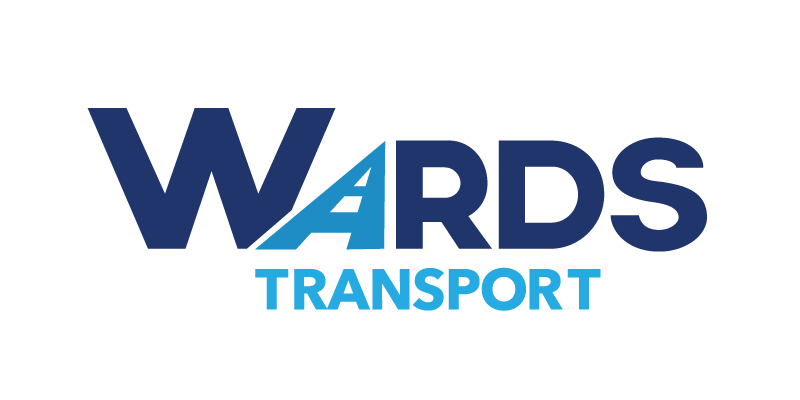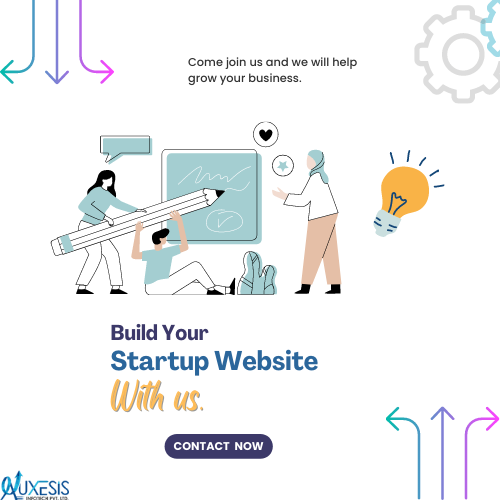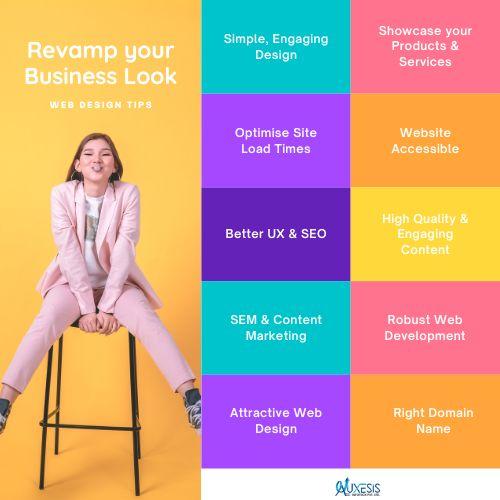
Are you an aspiring entrepreneur eager to launch your start-up company and make a mark in the competitive business world? Look no further! In this ultimate guide, we will take you on a journey to create a business website that will not only set you apart from the crowd but also propel your start-up to soaring success.
With the digital landscape evolving at lightning speed, a strong online presence has become the backbone of any business. Your website is not just a virtual storefront; it is a powerful marketing tool that can attract, engage, and convert potential customers. From choosing the right domain name to designing an intuitive user interface and optimizing for search engines, we will provide you with a step-by-step roadmap to create a website that not only looks stunning but also drives results. So, buckle up and get ready to embark on this exciting adventure of transforming your start-up dreams into a reality with a website that skyrockets your success!
Importance of a business website for start-up companies
In today's digital age, a business website is a crucial component of any start-up's success. It serves as the virtual face of your company, providing potential customers with a window into your brand, products, and services. Here are a few reasons why having a business website is essential for start-up companies:
- Credibility and Professionalism: A well-designed website conveys trust, credibility, and professionalism. It gives your start-up a polished image and instills confidence in visitors, making them more likely to engage with your brand.
- 24/7 Accessibility: Unlike a physical store that operates on specific hours, a website is accessible to potential customers 24/7. It allows users to explore your offerings, make purchases, or contact you at their convenience, increasing your reach and potential for sales.
- Brand Awareness and Visibility: A website acts as a powerful marketing tool, allowing you to showcase your brand's unique value proposition, story, and offerings. It provides an avenue to reach a broader audience, increase brand awareness, and expand your customer base.
- Lead Generation and Conversion: Through strategic design and content, your website can capture leads and convert them into customers. By incorporating call-to-action buttons, contact forms, and compelling offers, you can guide visitors through the sales funnel and drive conversions.
- Competitive Advantage: In today's competitive landscape, having a website sets you apart from businesses that rely solely on traditional marketing channels. A well-optimized website can help you outrank competitors in search engine results, attract more traffic, and ultimately gain a competitive edge.
Choosing the right domain name and hosting provider
The first step in creating a business website is choosing the right domain name and hosting provider. Your domain name is your online address, and it should be memorable, relevant, and representative of your brand. Here are some tips to consider when selecting a domain name:
- Keep it Simple and Memorable: Choose a domain name that is easy to remember and type. Avoid using complex words or numbers that may confuse visitors.
- Reflect Your Brand: Your domain name should align with your brand identity and convey what your start-up is all about. It should reflect your industry, products, or services to give visitors an idea of what to expect.
- Consider Keywords: Incorporating relevant keywords in your domain name can improve your website's visibility in search engine results. Conduct keyword research to identify popular and relevant terms related to your business.
Once you have chosen a domain name, the next step is to select a hosting provider. Hosting is the service that allows your website to be accessible on the internet. Here are a few factors to consider when choosing a hosting provider:
- Reliability and Uptime: Look for a hosting provider that offers reliable servers and guarantees high uptime. A website that is frequently down can lead to a poor user experience and potential loss of business.
- Scalability: Consider the potential growth of your start-up and choose a hosting provider that can accommodate your future needs. Ensure they offer scalable hosting plans that can handle increased traffic and resource demands.
- Security: The security of your website and customer data is paramount. Choose a hosting provider that offers robust security measures, such as SSL certificates, regular backups, and malware detection.
Website design and user experience tips
A visually appealing and user-friendly website design is essential for attracting and retaining visitors. Here are some design and user experience tips to consider when creating your business website:
- Simplicity and Clarity: Keep your website design clean, uncluttered, and easy to navigate. Use a clear and intuitive layout that guides users through your content and offerings.
- Responsive Design: With the increasing use of mobile devices, it is crucial to ensure your website is responsive and adapts seamlessly to different screen sizes. A mobile-friendly design improves user experience and helps you rank higher in search engine results.
- Visual Hierarchy: Use visual hierarchy to prioritize content and guide users' attention. Incorporate clear headings, subheadings, and visual cues to make it easy for visitors to scan and understand your website's structure.
- Consistent Branding: Maintain consistent branding throughout your website by using your brand colors, fonts, and imagery. Consistency reinforces your brand identity and creates a cohesive user experience.
- Fast Loading Speed: Optimize your website's loading speed to prevent visitors from getting frustrated and leaving. Compress images, minify code, and leverage caching techniques to ensure speedy page load times.
Mobile optimization for your business website
In today's mobile-driven world, optimizing your ewebsite for mobile devices is no longer optional; it is a necessity. Here are some tips to ensure your business website is mobile-friendly:
- Responsive Design: As mentioned earlier, responsive design is crucial for providing a seamless user experience across all devices. Test your website on different mobile devices to ensure it looks and functions well on smaller screens.
- Mobile-Friendly Navigation: Simplify your navigation menu for mobile users. Use collapsible menus, hamburger icons, or dropdowns to make it easy for visitors to navigate your site on smaller screens.
- Optimize Images and Media: Optimize images and media files to reduce their file size without compromising quality. Large files can slow down your website's loading speed, especially on mobile networks.
- Touch-Friendly Elements: Ensure that buttons, links, and interactive elements are large enough and spaced adequately for users to tap with ease. Avoid small font sizes and tightly packed elements that can lead to accidental clicks.
- Location-Based Optimization: If your start-up relies on local customers, consider implementing location-based optimization. Incorporate local keywords, create location-specific landing pages, and include your business address and contact details prominently.
SEO-friendly website structure and keyword research
To ensure your website ranks well in search engine results and attracts organic traffic, it is essential to optimize its structure and conduct keyword research. Here are some tips to make your website SEO-friendly:
- Logical Site Structure: Organize your website's content into logical categories and subcategories. Use descriptive URLs, header tags, and internal linking to create a clear hierarchy that search engines can crawl and understand.
- Keyword Research: Conduct thorough keyword research to identify the terms your target audience is using to search for products or services related to your start-up. Use keyword research tools to find relevant and high-volume keywords to incorporate into your website's content.
- Meta Tags and Descriptions: Optimize your meta tags and descriptions to include relevant keywords and accurately describe your web pages. Meta tags and descriptions are displayed in search engine results and can influence click-through rates.
- Optimized Page Titles: Each page on your website should have a unique and descriptive title that incorporates relevant keywords. Page titles are an essential ranking factor and should accurately reflect the content on the page.
- Optimized Images: Use descriptive file names and alt tags for your images to provide search engines with context. Optimized images can also appear in image search results and drive additional traffic to your website.
Content creation and optimization for your business website
Compelling and well-optimized content is the backbone of any successful business website. Here are some tips for creating and optimizing content that engages visitors and ranks well in search engines:
- High-Quality and Relevant Content: Create content that is informative, valuable, and relevant to your target audience. Address their pain points, answer their questions, and provide solutions that showcase your expertise and authority.
- Keyword Integration: Incorporate relevant keywords naturally into your content. Avoid keyword stuffing, which can negatively impact user experience and search engine rankings. Aim for a balance between optimizing for search engines and creating content that resonates with your audience.
- Compelling Headlines and Subheadings: Use attention-grabbing headlines and subheadings to break up your content and make it easy to scan. Engaging headlines can entice visitors to click and explore further.
- Calls-to-Action: Guide visitors towards desired actions by incorporating clear and compelling calls-to-action (CTAs). Whether it's signing up for a newsletter, making a purchase, or contacting your start-up, CTAs help drive conversions.
- Regular Updates and Fresh Content: Keep your website dynamic and engaging by regularly updating your content and adding fresh blog posts or articles. Fresh content signals to search engines that your website is active and relevant.
Integrating social media and other marketing channels
Integrating your website with social media and other marketing channels can amplify your reach and drive traffic to your website. Here's how you can leverage these channels effectively:
- Social Media Sharing Buttons: Add social media sharing buttons to your website to make it easy for visitors to share your content with their networks. Encourage social sharing by creating engaging and shareable content.
- Social Media Integration: Embed social media feeds or widgets on your website to showcase your social media presence and encourage visitors to follow or engage with you on social platforms.
- Email Marketing Integration: Capture visitor email addresses through opt-in forms on your website and integrate with an email marketing service provider. Build a subscriber list and nurture leads through targeted email campaigns.
- Paid Advertising: Consider utilizing paid advertising platforms like Google Ads or social media advertising to drive targeted traffic to your website. Set clear goals and target your ads to reach your ideal audience.
- Content Marketing: Create valuable and shareable content that positions your start-up as an industry thought leader. Publish blog posts, videos, or infographics that provide insights, tips, or solutions to your target audience's pain points.
Analytics and tracking for measuring website success
To measure the success of your business website and make data-driven decisions, it's crucial to implement analytics and tracking tools. Here's what you should consider:
- Google Analytics: Set up Google Analytics on your website to track important metrics like website traffic, user behavior, conversion rates, and more. Use this data to identify areas for improvement and optimize your website's performance.
- Goal Tracking: Define specific goals for your website, such as newsletter sign-ups, purchases, or form submissions. Set up goal tracking in Google Analytics to monitor and measure your progress towards these goals.
- Heatmaps and User Testing: Utilize heat mapping tools to visualize how users interact with your website. Identify areas of high engagement or drop-off points to optimize your website's design and user experience.
- A/B Testing: Test different versions of your web pages to determine which elements drive better results. Use A/B testing tools to experiment with headlines, images, CTAs, and layout variations to improve conversion rates.
- Conversion Funnel Analysis: Analyze your website's conversion funnel to identify areas of improvement. Use funnel visualization reports to understand where users drop off and optimize those stages for better conversions.
Website maintenance and updates for continued success
Maintaining and updating your business website is crucial for its continued success. Regular maintenance ensures it remains secure, optimized, and aligned with your evolving business goals. Here are some maintenance tasks to consider:
- Secuirty Updates: Keep your website secure by regularly updating its software, plugins, and themes. Monitor for security vulnerabilities and implement necessary patches or fixes promptly.
- Content Updates: Continuously update and refresh your website's content to keep it relevant and engaging. Add new products, services, or blog posts to provide value to your visitors and improve search engine rankings.
- Performance Optimization: Regularly analyze your website's performance, including loading speed and page responsiveness. Optimize your website's code, compress images, and leverage caching techniques to ensure optimal performance.
- Backup and Disaster Recovery: Regularly back up your website's files and databases to protect against data loss. Implement a disaster recovery plan to ensure you can quickly restore your website in case of emergencies.
- User Feedback and Testing: Collect user feedback to identify areas for improvement and gain insights into your website's user experience. Conduct user testing and gather feedback through surveys or feedback forms to make informed updates.
Creating a business website that skyrockets your start-up's success is a challenging but rewarding endeavor. By following the steps outlined in this ultimate guide, you can build a website that not only attracts and engages visitors but also drives conversions and propels your start-up to new heights. Remember, your website is more than just a virtual storefront; it is a powerful marketing tool that can set you apart from the competition and help you achieve your business goals. So, start implementing these strategies, and watch as your website becomes the driving force behind your start-up's success!
Consider Engaging the Services of a Web Design Company for Your Small Business Website
Potential customers now evaluate a company before making a purchase, and if your website doesn't appear professional, they will simply move on to your competitors.
While sales and credibility are key reasons for having a professional website for your small business, there are additional factors to consider when choosing a creative digital agency to create your website.
Why Should You Hire a Web Design Company?
- They stay updated with the latest design trends.
- They understand technology.
- They help build a user-friendly website.
- They can identify key areas of focus.
- They create websites efficiently.
- They provide guidance on website maintenance.
Above all, by hiring a web design company, you eliminate the hassle of figuring out how to start a website, allowing you to focus on growing your business.
When you enlist the services of professional small business website maintenance, you can relax knowing that you have not created a poorly constructed website.
According to Clutch, 92% of small businesses plan to have a website by the end of 2024. This statistic shows that small business owners recognize the importance of having a website and understand the missed opportunities of not having one.
The online world evolves rapidly. In the digital realm, one year in the online world can be equal to three years in the real world.
Keep going, you got this. All the best!
Recent Blogs
Our Clients








_0.png)





















Clutch & GoodFirms Reviews
Our success is demonstrated by having the most reviews compared to competitors.
Auxesis Infotech provides web development support on our Drupal platform. They are always flexible enough to help us achieve our goals. Very pleased with Auxesis competance, flexibility, communications and execution.
5

Richard Halderthy
Director Brand & Communications, Saint Gobain Ltd
30 Reviews
Powered by Clutch ![]()
I'm impressed by their communication and speed of action. Ever since we launched the redevelopment, there’ve been many compliments on the improved look, functionality, and ease of navigation.
5

Ryan Titley
Director of Projects, ERRIN
30 Reviews
Powered by Clutch ![]()
Get in touch with us!
Please fill in the form below, and one of us will get you or respond to your queries soon.





